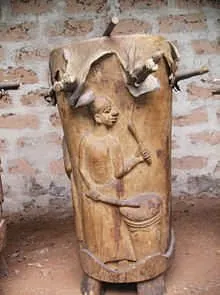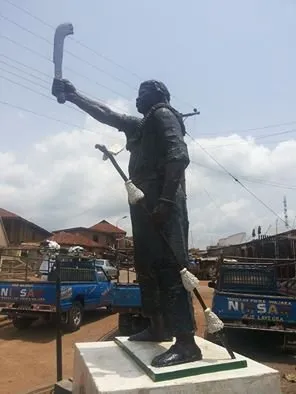Re-steemed
Ejigbo is a prominent town in Yoruba Land and the headquarters of Ejigbo Local Government Area, one of the oldest local government areas of Osun State in Nigeria. Ejigbo is strategically placed in the middle of the region, as 35 kilometres (22 mi) north-east of Iwo, 30 km (19 mi) from Ogbomoso in the north and 24 km (15 mi) from Ede in the south-east. It is about 40 km (25 mi) north-west of Osogbo, the capital of Osun State, and about 95 km (59 mi) north-east of Ibadan. It is part of the Ede North/Ede South/Egbedore/Ejigbo federal constituency. The population is 138,357 according to the GeoNames geographical database. The average elevation is 426 metres (1,398 ft).
It has an area of 373 square kilometres (144 sq mi) and had a population of 132,641 at the 2006 census. The average annual rainfall is 52.35 inches (1,330 mm), though there are great deviations from this mean value from year to year. Usually, the rainy season lasts from April to October.
Brief history of Ejigbo
Akinjole Ogiyan, The founder of Ejigbo Land
Ejigbo is a major Yoruba town in Osun State of Nigeria. It is about 40 kilometres (25 mi) to Oshogbo, the capital of Osun State.
According to oral history, Ejigbo is an ancient settlement. It was founded by Akinjole Ogiyan (abbreviation of "Ogiriniyan"), right after the old Oyo. Ogiyan has a rich pedigree, as a descendant of Oduduwa and the ruling family of Ile-Ife. Together with his brothers, particularly the Akire, the founder of Ikire-Ile, left Ile life with Oranya (Oranmiyan) – the founder of old Oyo, to establish their own town. The fact that the Ogiyan is from Ile-Ife, is confirmed by "Ejigbo Mekun" the name of a market in Ile-Ife. Akinjole settled many other villages spread around Yorubaland. He was the paramount ruler and prescribed authority over many if not all of them. The following towns and villages, among others, were under him: Ika, Igbon, Olosinmo, Ologede, Inisa, Aato, Ijimoba, Afake, Ilawo, Inisa Edoro, Isundunrin, Olla, Ado Ori-Oke, Ayegunle, Idigba, Ibogunde, Songbe, Olorin, Osuntedo and Iwata.
Around 1835, Ejigbo came under Ibadan, when the Ibadan army moved to protect Osogbo from Ilorin invaders. In fact, detachments from Ejigbo assisted the Ibadan army in the Osogbo, Ijaye, Jalumi, Off, and Kiriji wars between 1840 and 1866. Ajayi Ogboriefon, Balogun and leader of the Ibadan army in the Jalumi war circa 1860 and 1878 was native of Ejigbo from the Akala compound. His mother, Alagbabi, was the daughter of an Ogiyan of Ejigbo. In 1934, when the then government returned to the terms of the 1893 Treaty, which recognized Ibadan's independence and gazettes of the Baale and Divisional Council of Ibadan as an Independent Native Authority, five district obas, including the Ogiyan, were made members of the divisional Council.
The Ogiyan and council were also gazetted as subordinated to Native Authority under Ibadan for Ejigbo District Council. Although changes were made enlarging the membership of the Council between 1937 and 1938, the five districts Obas that included the Ogiyan retained their membership of the said Divisional Native Authority.
Thanks for reading.
@xpilar and everyone.


RE: New Contest from @Xpilar "home town" 30/11-2017 "get free upvote"